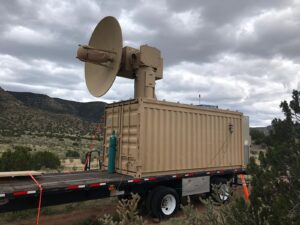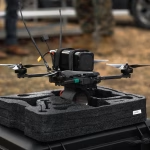
The Defense Department’s office assessing defenses against small unmanned aircraft systems (sUAS) is seeking white paper submissions leading to operational assessments next spring of counter-sUAS (C-sUAS)-as-a-service and of high-power microwave (HPM) solutions that can defeat drones. For the HPM assessment, the Joint C-sUAS Office (JCO) says it is seeking fixed ground-based solutions at a technology readiness level of six, which essentially refers to a prototype system and has been tested in a high-fidelity laboratory environment or simulated operational setting. The…

 By
By 











